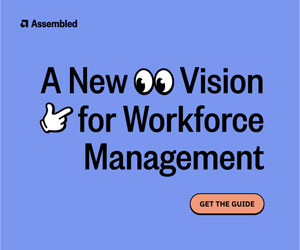We spoke to two contact centre professionals with years of experience handling seasonal volume – and the seasonal staffing that goes with it.
1. When should you start recruiting seasonal staff?
It’s important to act rather than react. Staff need not only to be in place by the beginning of your busy period, they need to be competent and prepared for handling high volume.
When you start your recruitment drive, you’ll also need to factor in the attrition rate. Some of your existing permanent staff may have left by the time new temporary staff arrive.
Linda Davis, Head of Operations at AllClear Insurance Services, discusses this sharp increase in call volumes, noting that: “our contact centre is made up of four departments, all of which have their peak months at the same time.
“Our January call volumes increase around 240% above December’s, so we historically begin our recruitment campaigns early in October. Our summer recruitment normally starts in May as the call volume increase is not as significant.”
Stu Booy, Head of Contact Centres for Monarch Travel Group, adds that: “we start planning the recruitment about 3 months out, coordinating with the necessary internal departments like L&D, HR and IT. Usually we would hope to advertise a position with at least a couple of months to spare, although this is fluid depending on the need and numbers required.”
2. How do you find staff who are interested in seasonal work?
It can be challenging to find staff who will take a job that may last only a short time. Many people are put off by a temporary contract, and managers often fear that this will affect the quality of potential candidates.
Some ingenuity might be required to balance the needs of the contact centre with the demands that will be placed on incoming agents.
According to Stu Booy, Monarch Travel Group have built relationships with local colleges, “offering travel-related courses, giving students work experience and part-time hours to complement their studies. We’ve had quite a number over the years who have then been offered permanent jobs once they complete their studies.
“Additionally, we find people returning to work after a period away from employment are more likely to accept seasonal positions, such as parents after time off bringing up children, or those who’ve been travelling or living abroad. The short-term nature of seasonal roles gives them the chance to get back into work, without feeling that they’re tied into the first job that they find.”
AllClear Insurance Services instead involve the children of existing staff and their friends, as Linda reports that: “we offer a ‘Recommend a Friend’ incentive. We use them throughout our summer months and across Easter during their holidays.”
Also, the company utilises “university students that have returned to us throughout the full term of their degree studies. Simple refresher modules bring them back up to speed when they return, and we tend to use them on specific skills to aid their speed to effectiveness on the phones.”
3. Do seasonal staff get placed in the same roles as other new starters?
Another important question is how to deploy staff once they are recruited. The return on investment (ROI) of training is a very real concern when new starters are only likely to be employed for a matter of months.
This makes for a very fine balance of skill and investment.
As Lisa’s contact centre is made up of four departments, they “try to increase resources in the department that manages a lower skill set product. This makes it far simpler to train out both product and system, and it’s easier for the agent to administer.
“We then redeploy the permanent agents from this team into our other departments to cover their peak periods. These experienced agents would have normally already gone through a cross-training exercise; where this hasn’t been fulfilled, we put their training plan into play throughout the recruitment and training months.”
Instead, Stu and his team “generally look to introduce seasonal staff into our less specialist activities, freeing up other more experienced team members to take on additional duties, in such areas as multimedia support.
“This is great from the perspective of mobilising seasonal workers quickly into essential, but less specialist, roles, whilst also giving existing team members greater responsibilities and developing their experiences.”
4. How does seasonal intake affect your overall training and recruiting planning?
When viewed as a long-term project, seasonal recruitment can be one part of the wider recruitment strategy. Seasonal variation should become part of the landscape of training and recruiting rather than a large and disruptive annual project.
Stu notes that in his contact centres “training is modular to allow flexibility, given our needs. For example, quieter periods of the year may allow us to complete more modules within an initial induction training programme, whereas during busier periods we may focus on the necessary modules to deliver staff out of training quicker, into less specialist positions.
“We frequently offer seasonal staff the opportunity to move to permanent contracts, based on their performance and also on resourcing requirements. It is rare that someone who performs exceptionally well within a seasonal role is not offered the chance to stay on with us at the end of their contract, given our desire to retain good people. ”
5. Do you have reduced expectations of temporary workers, or lower metrics for busy seasons?
There is an understandable temptation during peak times to meet KPIs by lowering the standard of interactions. Is that worthwhile, or does it end up becoming a cost?
The induction and training process at Linda’s contact centres “remains the same regardless of whether the new starters are contracted for our peak months or not. The only difference is that they are just trained on the one skill which offers the highest % call volumes.
“Where there remains a resource shortfall in our main product teams, we go through the recruitment and training process as usual but on a fixed-term contract. The training for this is quite intense so we do try to recruit with a view to retaining where attrition will allow.”
According to Stu, “making sure recruitment is handled with the aspiration of low staff turnover, rather than just a ‘bums on seats’ strategy, pays dividends when times are more challenging.
“We would not expect to compromise on our service level and customer experience just because more people require our services. If we recruit the right people, train them well, and resource manage effectively, there should be no need to offer a lesser service to our customers.”
But what about you? Do you have any other questions about managing seasonal intake?
If so, please leave them and any other thoughts in an email to Call Centre Helper.
Author: Megan Jones
Published On: 14th Dec 2016 - Last modified: 13th Aug 2025
Read more about - Workforce Planning, Key Performance Indicators (KPIs), Linda Davis, Metrics, Recruitment and HR, Staffing, Workforce Management (WFM), Workforce Planning










































